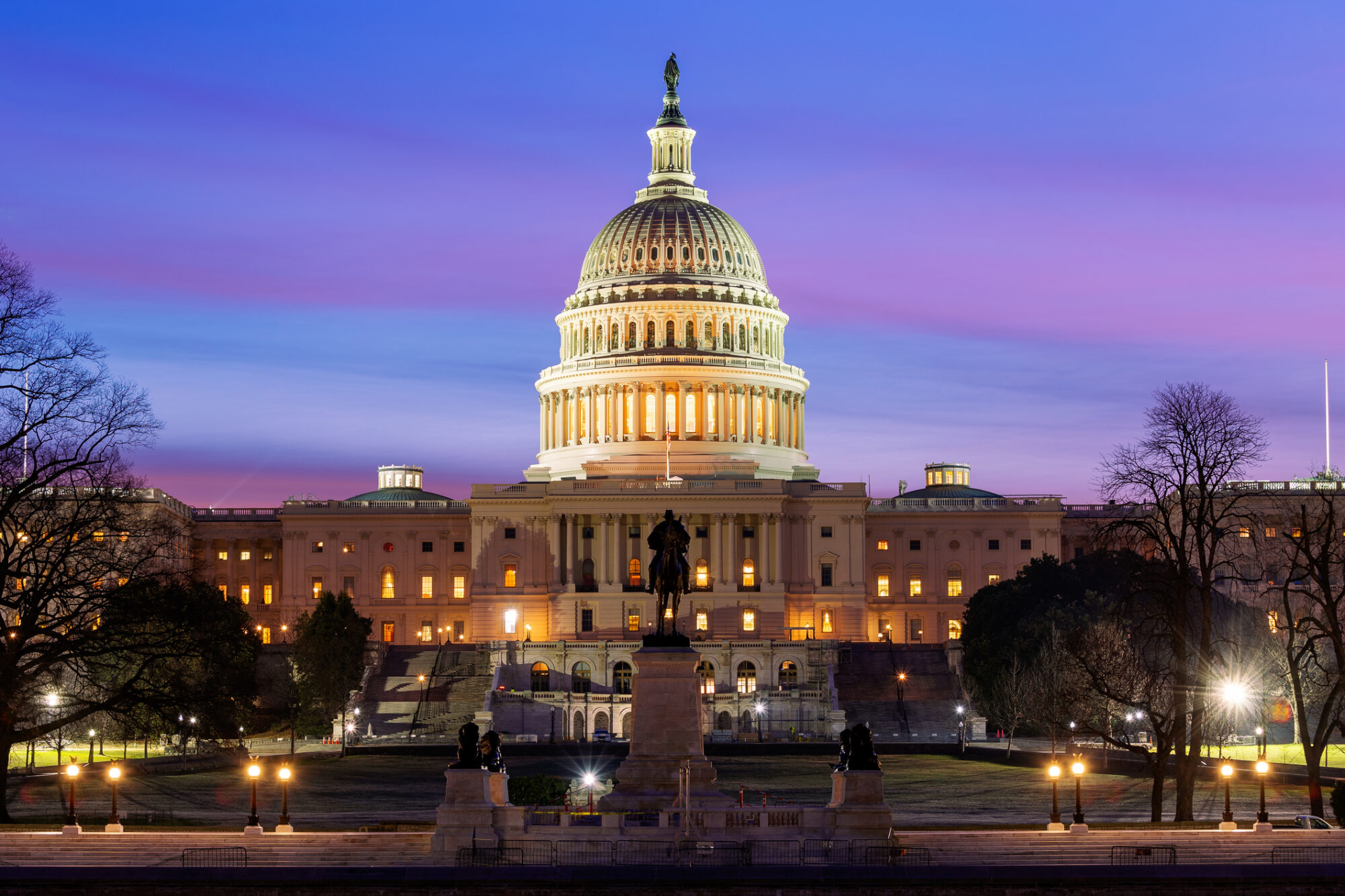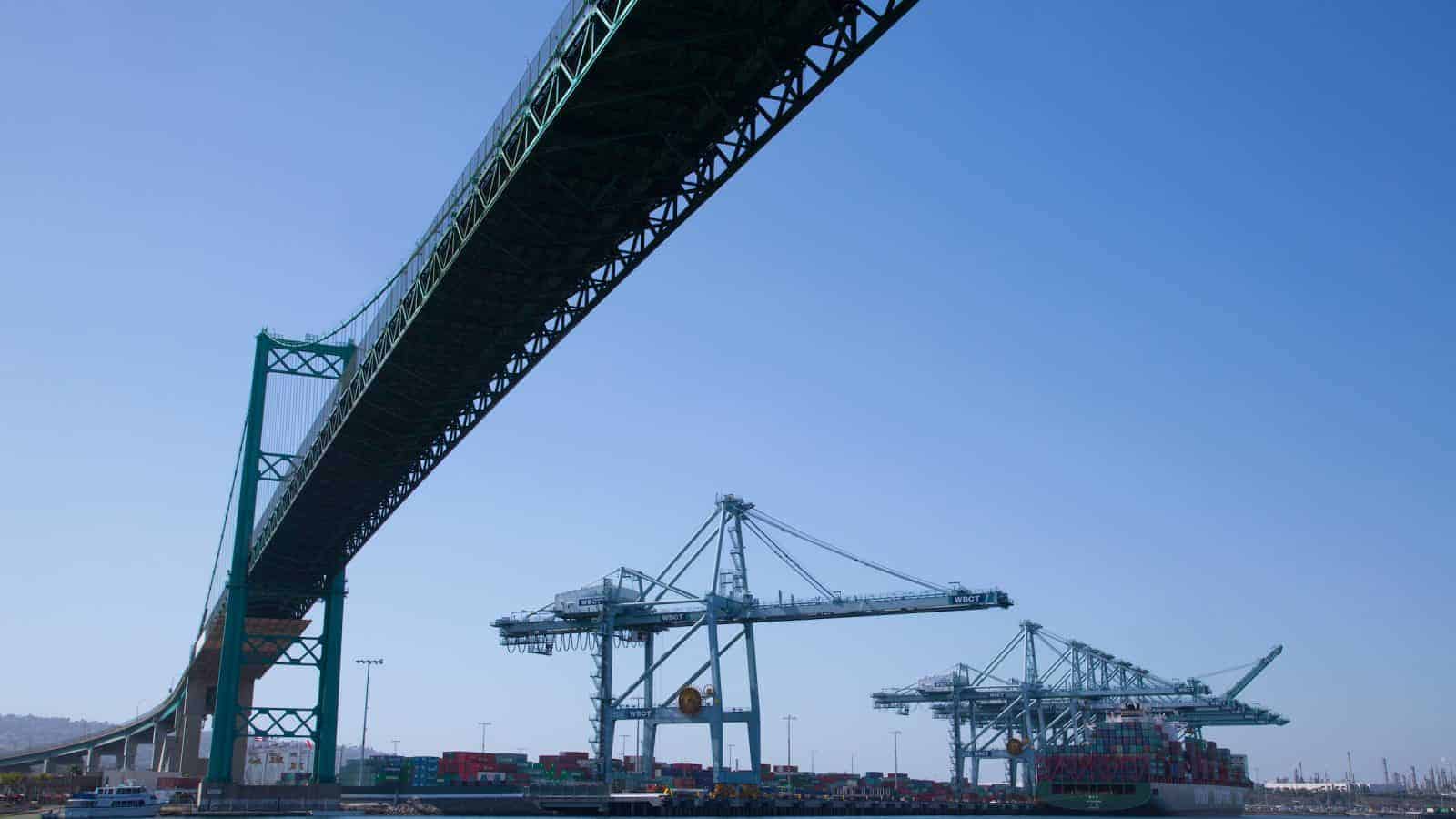Restoring MTB Will Strengthen Manufacturing
For More Than Three Years, Manufacturers Have Been Paying Millions of Dollars in Higher Prices for Critical Inputs
Washington, D.C. – Following the introduction of the Miscellaneous Tariff Bill Reform Act, National Association of Manufacturers Managing Vice President of Policy Chris Netram released the following statement:
“For more than three years, manufacturers—particularly small and medium-sized manufacturers—have been paying millions of dollars in higher prices for critical inputs due to the expiration of the Miscellaneous Tariff Bill. This legislation is a significant step forward for manufacturers, which are losing more than $1.3 million every day on products not available in the U.S.—more than $1.5 billion overall.
“Restoring the MTB would strengthen manufacturing here at home, giving our sector the ability to source raw materials and components that can’t be produced domestically at scale or at competitive prices.
“Historically, the MTB has always had bipartisan support, and we thank House Ways and Means Trade Subcommittee Chairman Adrian Smith for his leadership and efforts to introduce MTB legislation. We urge the House to act quickly so that we can get one step closer to getting this critical legislation to President Biden’s desk.”
-NAM-
The National Association of Manufacturers is the largest manufacturing association in the United States, representing small and large manufacturers in every industrial sector and in all 50 states. Manufacturing employs nearly 13 million men and women, contributes $2.89 trillion to the U.S. economy annually and accounts for 53% of private-sector research and development. The NAM is the powerful voice of the manufacturing community and the leading advocate for a policy agenda that helps manufacturers compete in the global economy and create jobs across the United States. For more information about the NAM or to follow us on Twitter and Facebook, please visit www.nam.org.
A Key Trading Partner: The NAM Hosts Make UK, Parliament Members

The United Kingdom and United States have many things in common, but perhaps most important is their shared democratic values. These, along with sound trade policies on both sides of the pond, will help propel each respective nation forward.
- That was the main message conveyed during a business roundtable discussion between the NAM and its British counterpart association, Make UK, on Monday.
What went on: In attendance at the meeting at the NAM’s Washington, D.C., headquarters were a delegation of eight members of Parliament who sit on the Business and Trade Commission, British Embassy representatives and nearly two dozen U.S.- and U.K.-based manufacturers.
- The focus of the event—which came approximately a year after the NAM and Make UK signed a memorandum of understanding to collaborate on programming—was to explore ways to enhance the U.S.–U.K. trade and economic relationship. There is no free trade agreement between the U.K. and the U.S.
- The delegation, led by House of Commons Business and Trade Committee Chair Rt. Hon. Liam Byrne of the Labour Party, is also in the U.S. for talks with members of the Biden administration, Congress and the business community to discuss U.K. export growth and manufacturing strategy.
Why it’s important: In the absence of an official FTA between the U.S. and the U.K., the two nations must “be pragmatic about measures our businesses and our governments can take now that will help our economies grow, create jobs, innovate and prosper together,” NAM President and CEO Jay Timmons told the delegation.
- Make UK CEO Stephen Phipson CBE said event attendees all agreed that “as we move closer to our respective domestic elections this year and with the challenges to the framework of global trade continuing, [we must] lean into future bilateral cooperation on trade, innovation, energy and technology, [as well as] defense-sector cooperation.”
Policy talk: Roundtable participants discussed “big-ticket” legislation that has proved particularly important to manufacturers in recent years: the 2021 Bipartisan Infrastructure Law, the CHIPS and Science Act of 2022 and parts of the Inflation Reduction Act of 2022.
- The pro-growth elements in these measures “make our industry more competitive, empowering manufacturers to invest in new facilities and new equipment, expand production and to create jobs,” Timmons went on.
By the numbers: Continued good relations between the U.S. and the U.K. are key not just because of the shared belief in and commitment to democracy, but also because of the large role each nation plays in the other’s economy.
- The U.S. is the U.K.’s single biggest trading partner by country, having accounted for more than 16% of total trade in 2022.
- That same year, U.S. exports to the U.K. were $76.2 billion, an increase of 40% from prior years. Meanwhile, in 2022, American imports from the U.K. were $64.0 billion.
Come what may: Though the U.S. is fast approaching an important and widely anticipated presidential election, the country will stay committed to its relationship with the U.K. no matter who wins in November, Timmons told the delegation.
- “Regardless of the outcomes … we will remain resolved to strengthen our bonds and to do everything in our power to grow manufacturing competitiveness on both sides of the Atlantic.”
FAA Authorization Moves Forward

In a bipartisan vote Wednesday, the Senate moved to advance Federal Aviation Administration reauthorization—but lawmakers still face a looming deadline to pass the legislation (The Hill).
What’s going on: “Senators voted 89 to 10 to overcome the first procedural hurdle and move toward consideration of the package ahead of the May 10 deadline.”
- The draft 1,069-page bill—which already has been punted three times—sets the agency’s priorities. It would authorize billions of dollars in appropriations for the FAA, as well as hundreds of millions of dollars for the National Transportation Safety Board, from fiscal year 2024 through 2028.
- But all 100 senators must agree to fast-track the measure for it to pass before next Friday.
Why it’s important: The FAA reauthorization bill renews statutes governing the agency’s civil aviation programs, as well as revenue collection authority. From air traffic operations to airport development, these functions are critical to the U.S. economy and the ability of Americans to travel.
However . . . Both Democrats and Republicans want amendment votes on the measure, and “lawmakers acknowledge it could be a bumpy ride” to passage.
A hot-button issue: One sticky wicket amendment that’s likely to get a vote would remove language in the bill that adds 10 flights at Ronald Reagan Washington National Airport.
- Senators from the Washington, D.C., area say the airport cannot handle any more traffic. Virginia and Maryland are home to Dulles International Airport and Baltimore Washington International Airport, respectively.
Russia’s Targeting of Ukrainian Energy Infrastructure Shows Need to Lift Ban

Russia’s missile attack on Ukraine last Saturday hit vital energy infrastructure, underscoring the need for the Biden administration to lift its more than three-month-old ban on U.S. liquefied natural gas export permits.
What’s going on: “The [missile] attack targeted ‘the power grid and the gas transit system, particularly the gas infrastructure that ensures the security of deliveries to the EU,’” Ukrainian President Volodymyr Zelenskyy said (POLITICO Pro, subscription).
- “Russia has intensified its assaults against Ukrainian power stations in recent weeks, and its missiles are now also hitting gas storage facilities that were used by some EU companies last winter to prevent energy shortages.”
- The strikes also hit four thermal plants in Ukraine and injured a worker.
Why it’s important: “With Russia targeting energy supplies in Europe, it is critical that we lift the ban on LNG exports so the United States can fill any unexpected gaps,” said NAM Director of Energy and Resources Policy Michael Davin. “Lifting the moratorium is a national and energy security issue.”
What Americans want: People in the U.S. overwhelmingly support natural gas exports, a recent NAM poll found, with 87% of respondents saying the U.S. should continue to export the energy source.
Return to Broadband Rules Will Harm Manufacturing Economy

The Federal Communications Commission voted Thursday to restore Obama-era broadband regulations—a move that is outside the agency’s remit and will erode investment in telecom infrastructure, the NAM said.
What’s going on: “The commission voted along party lines to finalize a proposal first advanced in October to reinstate open internet rules adopted in 2015 and reestablish the commission’s broadband authority” (Reuters, subscription).
- The rules, repealed by the Trump administration in 2017, will reclassify broadband as a telecom service under a law originally passed in 1934. This change will subject 21st century high-speed internet to regulations designed for the era of the rotary phone.
- The Biden administration has been seeking a return to the 2015 regulations since 2021, when the president signed an executive order urging the FCC to reinstate them.
Why it’s important: The resuscitated regulations will have a significant and negative impact on the U.S. economy, as historical evidence shows.
- From 2011 to 2022, attempts to impose so-called “net neutrality” restrictions depressed telecom infrastructure investment by $8.1 billion each year, decreased employment by approximately 195,600 jobs and reduced gross domestic product by $145 billion annually (Phoenix Center).
Our view: “Ultimately, [the FCC]’s broadband regulations are a solution in search of a problem,” the NAM wrote in a social post. “The U.S. already has an open and fair internet. This is just the latest in a long line of decisions adding to the regulatory onslaught facing manufacturers in America.”
New Power Plant Rules Unfeasible Without Permitting Reform

Final rules released Thursday by the Environmental Protection Agency to reduce greenhouse gas emissions from traditional fuel-fired power plants are not achievable without permitting reform—and they pose a threat to U.S. national and economic security, the NAM said yesterday.
What’s going on: The new rules, part of President Biden’s pledge to create a carbon-free energy sector by 2035, mandate that:
- Existing coal-fired plants and new natural gas–fired facilities cut or capture 90% of their emissions by 2032;
- Coal-fired plants drastically reduce wastewater runoff and severely tighten the emissions standard for heavy metals; and
- Coal ash—including past deposits “placed in areas that were unregulated at the federal level until now”—be managed in storage ponds.
A first: “The power plant rule marks the first time the federal government has restricted carbon dioxide emissions from existing coal-fired power plants” (Associated Press).
- The new regulations—which face almost certain court challenges—set emissions caps that plant operators would be required to meet.
Targeting major energy sources: Natural gas generates approximately 43% of all U.S. electricity, while coal generates about 16% (AP).
Why else it’s problematic: While manufacturers appreciate that the EPA heeded the input of their industry and did not include existing gas plants in the new requirements, as written the final rules are unattainable because the administration and Congress have not undertaken much-needed, comprehensive permitting reform, according to NAM President and CEO Jay Timmons.
- “Congress and the president have not enacted permitting reform—making it impossible to achieve the EPA’s highly aspirational mandates,” Timmons said. What’s more, the final rules threaten “grid reliability because of the unrealistic timeline for power plants to adopt technologies within the next 10 years that have yet to even be proven at scale.”
- Pushing through yet another set of regulations in the absence of systemic reforms burdens an already overtaxed national electrical grid, jeopardizing U.S. security in a way that “literally could leave Americans in the dark and factories offline.”
What should be done: The EPA should partner with—not undermine—manufacturers “to achieve a more balanced regulatory framework to help reach our climate goals.”
Trade, Investment Policy Can Promote Supply Chain Resilience for Manufacturers

The NAM told the Office of the United States Trade Representative this week that it must use existing trade and investment tools to promote supply chain resilience for manufacturers in the U.S.
What’s going on: “Manufacturers and workers in the U.S. need USTR to undertake a proactive and competitive trade and investment policy that opens markets, eliminates barriers, enables the sourcing of necessary inputs and creates opportunities for inbound and outbound investment,” the NAM said Monday.
- The suggestions were in response to a USTR call for comment on “strategies that [will] advance U.S. supply chain resilience” (Federal Register).
What should be done: While manufacturers appreciate engagement with partners through frameworks such as the Indo-Pacific Economic Framework and the Americas Partnership for Economic Prosperity, the NAM encourages the government to “aggressively pursue ambitious agreements that include market access and the true removal of barriers to economic engagement with our partners.” The USTR can help manufacturers by:
- Adjusting or eliminating “current tariffs on manufacturers and ensur[ing] they are applied in such a way that creates a competitive environment for manufacturing in the U.S.”;
- “Negotiating more high-quality, modernized trade agreements with foreign partners” to remove trade barriers and address discriminatory measures; and
- Enforcing on-the-books trade agreements “to ensure that our trading partners are playing by the rules.”
Why it’s important: The aforementioned actions (and others) by the USTR would create “a competitive environment for manufacturers in the U.S. to succeed,” the NAM said.
West Coast Ports See Cargo Growth

Two major U.S. West Coast ports saw continued cargo growth in March, coinciding with supply chain fallout from the Francis Scott Key Bridge collapse in Baltimore (Los Angeles Daily News).
What’s going on: The Port of Los Angeles “processed 743,000 twenty-foot equivalent units (TEUs, the industry’s standard measurement for cargo units) last month—up 19% from March 2023. It was the port’s eighth-consecutive month of year-over-year growth.”
- The Port of Long Beach last month moved 654,082 TEUs, a cargo increase of 8.3% from March 2023. Its imports rose 8.4% compared to last year.
- The ports anticipate April—traditionally “slack season” for the entry points—being “another busy month,” Port of Los Angeles Executive Director Gene Seroka said.
Why it’s important: The growth is reflective of “resilient consumer spending, [which] is key to our nation’s growth,” Seroka continued. “U.S. economic indicators remain positive even with some uncertainty regarding interest rates and the latest inflation data.”
Shoring up systems: The Port of Los Angeles is working to ensure the safety of its systems following the March 26 Key Bridge collapse and an executive order by President Biden that increases cybersecurity regulations at all U.S. ports.
Biden Administration Limits Arctic Drilling

The Biden administration has placed new restrictions on traditional energy exploration and production in large portions of Alaska’s Arctic (Law360, subscription).
What’s going on: A rule handed down last Friday by the U.S. Department of the Interior’s Bureau of Land Management puts “[n]ew limits on fossil fuel production in the National Petroleum Reserve-Alaska,” a 22.8 million–acre site that holds large reserves of oil and natural gas.
- The rule limits future oil-and-gas leases and industrial development and “codifies a ban on new leasing across a further 10.6 million acres of the reserve, about 40% of its total area,” according to the agency.
- The regulation also rules out construction of a road proposed by the Alaska Industrial Development and Export Authority to allow miners to reach mining sites in Alaska’s north-central region.
Why it’s problematic: The move—which the administration said is intended to protect wildlife habitats and “honor the culture [and] history” of Alaska Natives—erodes U.S. energy security and independence while financially harming local indigenous people.
- “The final rule ‘will hurt the very residents the federal government purports to help by rolling back years of progress, impoverishing our communities, and imperiling our Iñupiaq culture,’ Voice of the Arctic Iñupiat President Nagruk Harcharek said.”
- The NPR-A contains approximately 8.7 billion barrels of oil and 25 trillion cubic feet of natural gas resources, according to the U.S. Geological Survey.
The last word: “The rich resources of the Arctic should be part of a responsible, all-of-the-above approach to U.S. energy security and independence,” said NAM Director of Energy and Resources Policy Michael Davin. “This rule is a step backward on the path to achieving a sustainable energy future.”
Durable Goods Orders Rise

New orders for durable goods in the U.S. increased more than expected last month (Business Insider and U.S. Census Bureau). Shipments were virtually unchanged.
What’s going on: Orders for manufactured durable goods rose 2.6% in March, to $283.4 billion.
- The rise followed a downwardly revised 0.7% increase in February.
- Shipments of durable goods slipped slightly, down $0.1 billion, but remained essentially flat at $282.4 billion following a 1.2% increase in February.
The details: Excluding transportation, new orders increased 0.2%, and excluding defense, new orders rose 2.3%.
- Transportation equipment drove the slight decrease in shipments of durable goods.
Inventories and unfilled orders: Stocks of manufactured durable goods were nearly unchanged at $527.9 billion, a decrease of less than $0.1 billion from February. This follows seven consecutive monthly increases.
- Unfilled orders for manufactured durable goods rose 0.4% in March to $1,397.2 billion, following a decrease in February.
